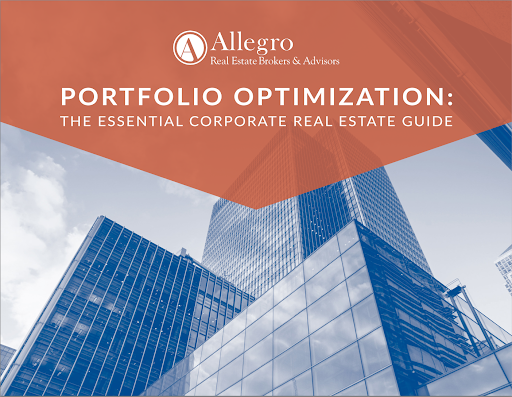For years, technology has evolved at a rapid rate—and commercial real estate is just one of many industries benefiting from these new innovations.
From drone technology to digital facilities management solutions, this post will explore new developments in commercial real estate technology, sometimes referred to as PropTech, and how they offer added security, personalization, and efficiency to the CRE industry as a whole.
Technology-Led Innovations in Commercial Real Estate
Virtual Reality and Augmented Reality
Continually evolving virtual reality (VR) and augmented reality (AR) technologies allow users to immerse themselves in digitally generated environments. While virtual reality introduces a complete change of surroundings, augmented reality digitally presents new features (think: a different set of furniture in an office space) to a user’s current environment.
VR and AR in commercial real estate allow brokers and tenants to screen and tour properties without traveling to the market itself; a tenant interested in leasing an office space in another state, for example, can “walk” through the building without physically being there. VR and AR technology also give tenants the freedom to try different customization options before constructing new commercial real estate buildings.
This tech can also be used to highlight detailed, and otherwise unseen, aspects of a building. With augmented reality, information on the building’s HVAC system and other energy management systems can be called out for the tenant, ensuring you don’t miss the potential efficiencies, cost savings, and green value that could positively influence your CRE decision.
Drone Technology
Drone technology can be used to capture 360-degree images and video for commercial real estate property listings, and are increasingly being used in distribution centers and warehouses for inventory inspection.
Building management systems can upload information to the drone’s operating system, which the drone can then use to identify missing or improperly labeled inventory. Drones can also automatically report issues, leaving staff members with more time to focus on resolving those problems.
In addition, drones have the potential to access maintenance issues that may be difficult to see by conducting assessments like roof inspections and exterior building envelope inspections, and may be involved in the future of distribution services.
Data Collection & AI Solutions
Data collection, in general, is the process of logging and maintaining data. Commercial real estate data may include building sizes and locations, financial considerations, and market information.
In recent years, the collection and organization of data has naturally led to the creation and implementation of AI-powered solutions for CRE. For example, one AI solution may streamline facilities management tasks by using data to automate building functions like HVAC systems. A tenant can then spend less time coordinating management operations with a landlord or external team of specialists.
Facilities Management Technologies
Facilities management technology is designed to streamline facilities management processes like project management, work order submissions, security, and maintenance updates.
Browser-based facility management systems, like Quickbase or SpaceIQ, allow businesses to go completely or nearly all paperless, an organizational benefit for tenants.
3 Ways Commercial Real Estate Can Benefit from New Technology
With the application of new tools and technologies comes a multitude of benefits for commercial real estate tenants. Here are a few.
1. Security
Both digital and physical security is essential in commercial real estate—and large commercial buildings are particularly at risk of cybercrime and technical failures.
Property management technologies and platforms can ensure the safety of your property and information by conducting inspections via GPS integration and IoT sensors to quickly evaluate your asset’s condition. Meanwhile, adopting new data collection processes and policies can keep sensitive information protected.
2. Personalization
Through transaction experience and thorough market research, real estate brokers understand how to meet their clients’ needs. However, sifting through market information that aligns with client needs and priorities can take significant time and resources.
AI-powered technologies enhance brokers’ ability to pull and present market and property information that’s personalized to your needs. With this information readily available, you have the power to make the right real estate decisions for your organization.
3. Efficiency
Data-driven technology streamlines commercial real estate processes, ultimately allowing brokers to more efficiently screen and select properties that work best for tenants.
New elevator technology in commercial buildings also has the potential to improve efficiency. Rather than the standard up and down buttons, future elevator systems will likely ask visitors to input their destination floor before stepping inside. By collecting this data, the elevator system can more intelligently select the appropriate elevators, ultimately lowering wait and transit times.
Technology has had, and will continue to have, a major impact on commercial real estate. Work with a trusted real estate advisor to navigate emerging technologies and ways you can leverage them for your own CRE portfolio.







